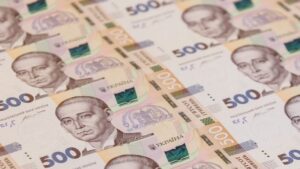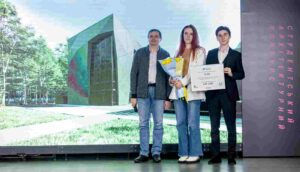
Standard One’s investment vehicle, S1 REIT, has paid out its first million in dividends, according to the fund’s press service.
It is specified that the total amount of dividends received by investors of the S1 VDNG fund for the period from April to December 2025 reached almost 1.026 million, which after taxes amounted to UAH 914.8 thousand.
“The example of S1 REIT proves that the residential rental sector in Kyiv is very profitable. High profitability is maintained even in conditions of transparent operation, without the use of ”gray” schemes to optimize tax pressure. Thanks to our work, we not only ensured timely dividend payments to investors, but also replenished the state budget by more than UAH 71 thousand and paid almost UAH 40 thousand in military tax,” said Viktor Boichuk, commercial director of S1 REIT, whose words are quoted in the report.
Starting in September 2025, dividends will be paid to investors in the S1 VDNG fund on a monthly basis. The amount of accruals depends on the fund’s performance over the previous period. The indicators are based on actual rental income from the real estate owned by the fund and reflect the stable performance of the asset in market conditions. Thus, according to the results of November, the annualized return for investors reached 9.1% in dollar terms, which is higher than the planned return of 8.2% in currency.
As reported, in April this year, Kyiv-based developer Standard One, which specializes in Build-to-Rent projects, announced the launch of a new product – S1 REIT. This is an investment tool that allows you to become a co-owner of square meters in S1’s profitable buildings without having to personally manage the assets. Currently, S1 REIT has two open-ended funds: S1 VDNG and S1 Obolon. The assets of the S1 VDNG fund are apartments in the profitable S1 VDNG building in Kyiv. The building has been in operation since 2019. According to estimates by the developer Standard One, the occupancy rate of the property by tenants reaches 99%.
Standard One (S1) is a full-cycle development company that has been developing the build-to-rent real estate segment in Kyiv since 2016. Its portfolio includes the completed S1 VDNG project and the new S1 Obolon, S1 Terminal, S1 Nyvky, and S1 Poznyaki buildings.

The selection process has been announced for supervisory boards of a number of energy companies, namely: LLC “Gas Transmission System Operator of Ukraine”, JSC “Ukrainian Distribution Networks”, Market Operator JSC, Centrenergo PJSC, Energy Company of Ukraine JSC, Energoatom NAEC, Ukrenergo PJSC, and Ukrhydroenergo PJSC, according to the Ministry of Economy, Environment, and Agriculture.
According to its announcement on Telegram on Monday, competitions have been announced for the following vacant positions in the Supervisory Board: OGTSU – two state representatives, URS – five members of the Supervisory Board (three independent and two state representatives), Market Operator – two state representatives, Centrenergo – five members of the supervisory board (three independent and two state representatives), EKU – one independent member, one state representative, Energoatom – three state representatives, Ukrenergo – one state representative, Ukrhydroenergo – one state representative.
Deadline for submission of documents: by 6 p.m. (Kyiv time) on December 21, 2025.
Key requirements for candidates include at least five years of experience in management positions in the public and/or private sector of the energy industry, higher education, proficiency in Ukrainian and English for Ukrainian citizens, or proficiency in English only for foreign citizens. In addition, among the requirements is the ability to devote at least 50 working days per year to performing duties.
It is noted that candidates may apply to several companies at the same time, which should be indicated separately in the application for participation in the selection process.
As reported, an appendix to Cabinet Resolution No. 1596 approved the procedure for selecting new members of supervisory boards in the energy sector, according to which a competition commission must be created. Its chairman is the head of the Ministry of Economy, Oleksiy Sobolev, who must approve the personal composition of the commission. The commission includes two representatives of the Ministry of Economy, one representative each from the Ministry of Finance, the Ministry of Justice, and the state agency that manages state property.
In the case of the largest state-owned companies, where the members of the supervisory board are selected by a nomination committee with the participation of foreign representatives, this procedure applies only to the selection of board members who are representatives of the state. But even in this case, the competition commission sends the selected candidates to the nomination committee.
In recent days, the head of the Ministry of Energy, Artem Nekrasov, dismissed all members of the Supervisory Board of the State Property Fund, two each from the Market Operator and the OGTSU, who had been appointed by orders of the ministry headed by Herman Galushchenko.
Thus, the Ministry of Energy dismissed all members of the Supervisory Board whose dismissal was provided for by Government Resolution No. 1596. There are no decisions by the State Property Fund on the dismissal of members of the Supervisory Board of companies under its management (we are talking about Centrenergo and Energy Company of Ukraine). At the same time, on December 9, the State Property Fund noted that due to changes in the procedure for selecting and appointing members of the supervisory boards of the state-owned joint-stock companies Energy Company of Ukraine and Centrenergo, the documents previously submitted by candidates cannot be accepted for consideration.
After the new selection procedure has been developed and approved, the Ministry of Economy of Ukraine will announce new competitions in accordance with the requirements of the law and will publish this information on its information platforms.
The government undertook to restructure the supervisory boards of energy companies after the National Anti-Corruption Bureau (NABU) and the Specialized Anti-Corruption Prosecutor’s Office (SAP) made public the Midas case concerning large-scale corruption in the energy sector. In particular, according to Resolution No. 1596, the Cabinet of Ministers instructed to dismiss two members of the supervisory boards of OGTSU, EKU, and Market Operator, three members of Centrenergo, and five members of URS.
According to the online portal Energorforma, the Ministry of Energy also proposed that the Cabinet of Ministers add JSC Ukrainian Distribution Networks, JSC Market Operator, and SE Guaranteed Buyer to the list of enterprises important to the economy with a state share of 50% or more, whose managers and members of supervisory boards are appointed with the participation of a nomination committee.
The relevant draft resolution provides for amendments, in particular, to Resolution No. 777 of September 3, 2008, on the competitive selection of managers of state-owned enterprises.

UKRNAFTA, the largest gas station chain in Ukraine, is supporting residents of Odesa, Mykolaiv, and the Odesa and Mykolaiv regions who have been affected by Russian shelling of energy infrastructure.
The company’s gas stations are open to anyone who needs heat, light, or a place to recharge their devices.
All UKRNAFTA gas stations are operating on backup power from generators, and 30 gas stations in the regions are functioning as points of resilience.
For all visitors, the network in the affected regions offers a 50% discount on coffee, hot dogs, burgers, and sandwiches at UKRNAFTA gas stations.

Coffee is free for services working to restore energy, heat, and water supply in the regions.
The addresses of the nearest gas stations and points of resilience are available in the UKRNAFTA app.
JSC Ukrnafta is Ukraine’s largest oil production company and operates the largest national gas station network, UKRNAFTA. In 2024, the company entered into an asset management agreement with Glusco. In 2025, it completed a deal with Shell Overseas Investments BV to purchase the Shell network in Ukraine. It operates a total of 663 gas stations.
The company is implementing a comprehensive program to restore operations and upgrade the format of its network of gas stations. Since February 2023, it has been issuing its own fuel vouchers and NAFTAKarta cards, which are sold to legal entities and individuals through Ukrnafta-Postach LLC.
The largest shareholder of Ukrnafta is Naftogaz of Ukraine with a 50%+1 share.
In November 2022, the Supreme Commander-in-Chief of the Armed Forces of Ukraine decided to transfer to the state the corporate rights of the company that belonged to private owners, which is now managed by the Ministry of Defense.

In January-November this year, Ukraine reduced manganese ore exports by 60.8% compared to the same period last year, to 17,592 thousand tons, but in August-November, it stepped up deliveries.
According to statistics released by the State Customs Service (SCS) on Friday, while deliveries in the first seven months of 2025 amounted to 2,977 thousand tons, exports more than doubled in August, when 5,037 thousand tons were exported, 1,725 thousand tons in September, 3,993 thousand tons in October, and 3,860 thousand tons in November.
In monetary terms, exports for the 11 months of 2025 fell by 56.7% compared to the same period in 2024, to $2.843 million. At the same time, the main exports were to Slovakia (99.02% of shipments in monetary terms) and Poland (0.98%).
During this period, the country imported 37,006 thousand tons worth $5.546 million from Ghana, with all deliveries taking place in November. In the first 11 months of 2024, 84,275 thousand tons of ore worth $18.212 million were imported.
As reported, in January 2024, Ukraine exported 44,903 tons of manganese ore worth $6.563 million to the US, ending a two-year hiatus in exports to foreign markets. In February-December 2024, there were no exports of manganese ore.
At the same time, for the whole of 2024, the country imported 84,293 thousand tons worth $18.302 million from Ghana (98.85%), Brazil (0.99%), and Belgium (0.11%). There were no imports in October-November.
Ukraine did not export manganese ore in 2022 and 2023, and in 2021, it exported 770 tons worth $89 thousand.
In addition, it was reported that the Pokrovsky Mining and Processing Plant (PGZK, formerly Ordzhonikidze Mining and Processing Plant) and the Marganetsky Mining and Processing Plant (MGZK, both in Dnipropetrovsk region), which are part of the Privat Group, stopped mining and processing raw manganese ore in late October-early November 2023, while NZF and ZZF stopped smelting ferroalloys. In the summer of 2024, ferroalloy plants resumed production.
PGZK and MGZK did not produce any products in 2024, while in 2023, PGZK produced 160.31 thousand tons of manganese concentrate, and MGZK was idle.
In Ukraine, manganese ore is mined and enriched by the Pokrovsky and Marganetsky mining and enrichment plants.
The consumers of manganese ore are ferroalloy enterprises.

Rauta has announced that a student team from Kyiv National University of Civil Engineering and Architecture (KNUSA) has won the Steel Freedom 2025 architectural competition with a project using Ruukki’s Primo Skyline 150 metal facade cassettes.
According to the company, KNUSA students successfully combined large-format facade cassettes Primo Skyline 150 with open metal structures of red color, which became the compositional center of the building. The Steel Freedom 2025 finals took place on November 29, and the best student teams from specialized universities of Ukraine took part in it.
The winning team under the number 918, which included KNUSA students, was also awarded in special nominations from Archimatika, AVG Group and “Intergal-Bud”, as well as took a prize in the rating of the international bureau MVRDV, as noted in the materials of the organizers of the competition.
Rauta emphasized that the use of premium ventilated facades Ruukki Primo Skyline with high geometry accuracy and the possibility of perforation opens up additional opportunities for young architects when designing modern energy-efficient buildings.
Rauta is the leader of the Ukrainian steel construction market, a member of the European Construction Industry Association. The company provides design, production and installation solutions in accordance with current EU regulations. The company is licensed to perform construction works with medium and significant impact class (CC2, CC3). According to the data of the Unified State Register, the owner of 100% of the authorized capital of the company is Andriy Ozeychuk.